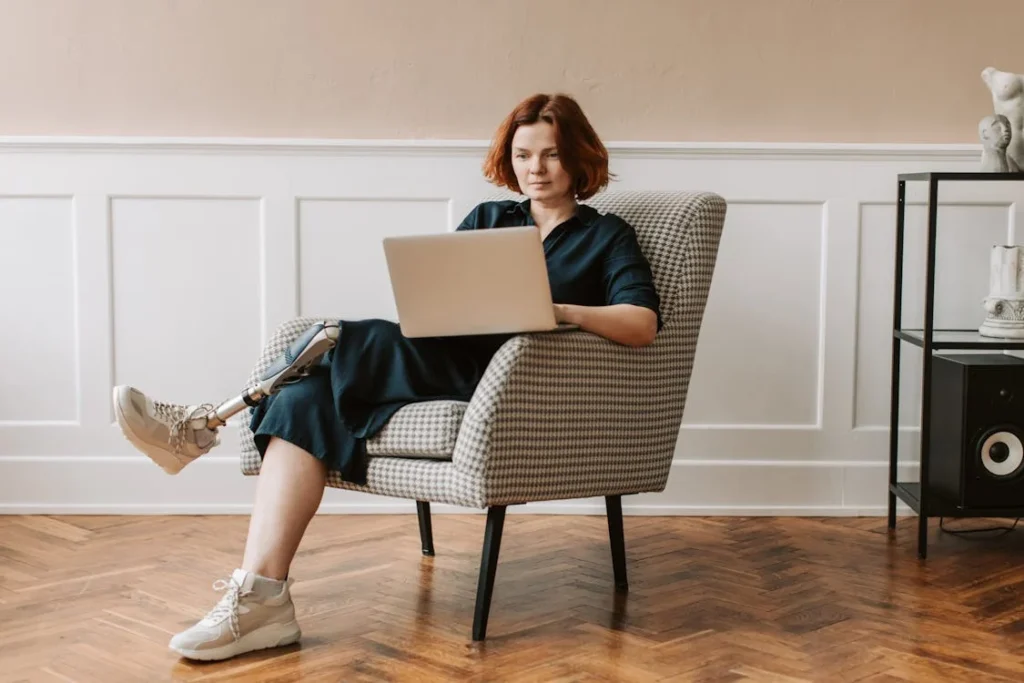Losing a limb is life-changing. But for many Indian amputees, the real challenge starts after the surgery—when they’re learning to live again, to move again, to feel like themselves again. It’s a journey filled with ups and downs. And while prosthetics can restore function, keeping up with recovery isn’t easy. That’s where game-based apps are quietly making a big difference.
These apps aren’t just games. They turn rehab into something more engaging, more hopeful, and more human. They help users track progress, build confidence, and stay consistent—without it feeling like a burden.
At RoboBionics, we’ve seen how game-based tools can turn frustration into motivation. Let’s explore how Indian amputees are using these platforms not only to heal, but to thrive.
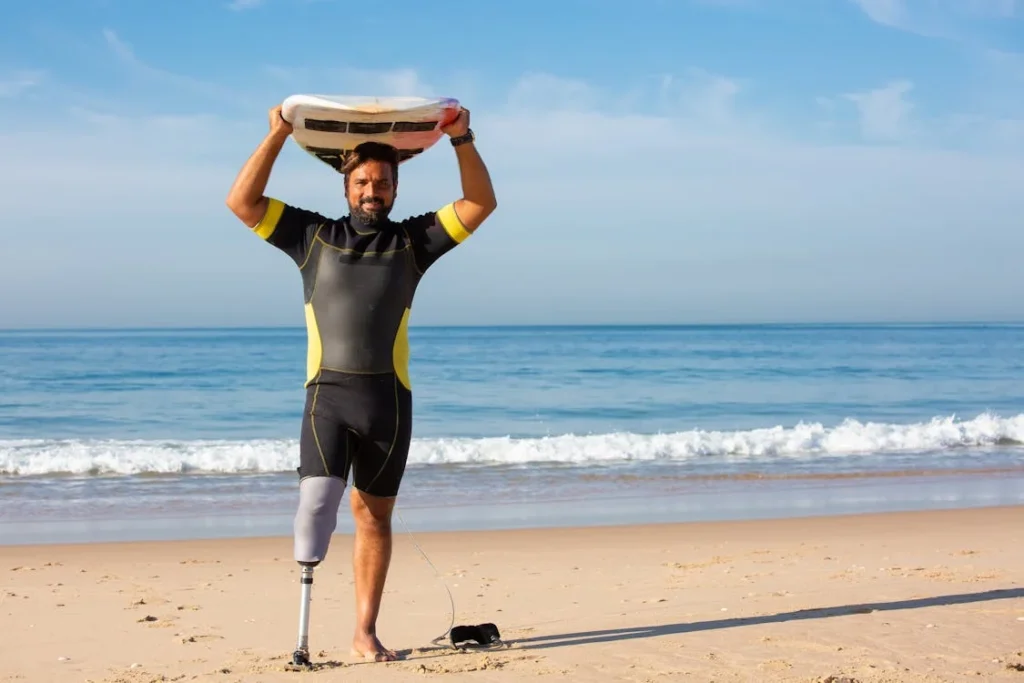
A New Way to Heal: Turning Recovery Into a Game
Why Traditional Rehab Often Fails to Motivate
Rehab after limb loss is one of the most important parts of recovery. It’s where strength is rebuilt, movement returns, and confidence begins to grow. But in India, many amputees don’t complete their rehab—not because they don’t want to, but because the process feels too hard, too boring, or too disconnected from daily life.
Traditional rehab exercises can be repetitive. Sitting in a clinic, squeezing a stress ball, or doing basic motions with no feedback can make anyone feel unmotivated. The sessions are often long, and when the progress feels slow, many start to skip practice altogether. For working adults, students, or those managing home responsibilities, daily visits to rehab centers are also unrealistic.
And so, even with a good prosthetic in place, many users never reach their full potential. They stop practicing. They lose confidence. They quietly give up.
That’s where game-based apps come in—not as a replacement for therapists, but as a powerful tool to keep people engaged, focused, and excited to keep moving.
How Gamified Apps Are Changing the Recovery Journey
A game-based rehab app does more than entertain. It guides. It teaches. It motivates.
When someone logs into the app, they’re not just playing—they’re working on grip strength, speed, precision, and coordination. But because it feels like a game—with levels, stars, challenges, and scores—they don’t mind putting in the time. In fact, many users train longer than they’re required to, just to beat their last score or unlock the next challenge.
These small, playful rewards add up. They build muscle memory. They sharpen focus. And they offer something traditional rehab rarely does—immediate, visible progress.
For Indian amputees, especially those using modern prosthetics like our Grippy™ Bionic Hand, these apps have become daily tools. They bring recovery home, making it easier to train anytime, anywhere. No long travel. No awkward clinic hours. Just a phone, a goal, and a game.
Stories of Strength From Across India
In Pune, a young college student who lost his right hand in an accident now uses a game-based rehab app to regain fine motor control. At first, he felt shy using his prosthetic in public. He worried people would stare. But as he started completing daily challenges and seeing real improvement, his confidence grew. Today, he uses his Grippy™ Mech Hand in class, in the lab, and proudly explains how it works to anyone who asks.
In Chennai, a working mother of two uses her prosthetic to cook, clean, and care for her family. Her favorite time to use the rehab app? Early morning, before her kids wake up. She says those quiet minutes—just her and the game—help her feel stronger, calmer, and more in control. She’s even introduced her daughter to the app, and they now play some of the grip games together, making it a shared experience.
These are just two of many stories we hear at RoboBionics. People of all ages, from cities and towns across India, are finding joy in their recovery through simple, smart, game-based tools.
Why This Approach Works So Well in India
India is a country full of contrasts. We have world-class hospitals and small, rural clinics. High-speed internet and areas with patchy coverage. Advanced prosthetics and still-growing awareness about disability care. But one thing we do have everywhere is the mobile phone.
Even in the most crowded lanes of a metro city, even in the quiet corners of small towns, phones are present. That’s why game-based rehab apps make sense here. They meet people where they are. They use a tool everyone already has, and they turn it into a path for healing.
For many Indian amputees, this isn’t just convenient—it’s empowering. It gives them control. It says, “You don’t have to wait for an appointment. You can move forward now.”
And for families who often play a big role in recovery, these apps become a way to join in. We’ve seen siblings cheer each other on. Parents help their children log sessions. Spouses take turns trying the challenges just for fun. Rehab stops being a solo task and becomes a shared journey.

From Frustration to Fun: Reframing the Recovery Experience
Why Mindset Matters as Much as Muscle
When someone loses a limb, the emotional impact often runs deeper than the physical one. Many people go through phases of anger, sadness, or embarrassment. They might withdraw from social life, hesitate to ask for help, or stop believing that things will ever feel “normal” again. These feelings are especially common in the early weeks of recovery, when every small task can feel like a big test.
That’s why mindset plays such a huge role in the recovery journey. Without the right mindset, even the best prosthetic won’t lead to progress. Users need to feel hopeful, motivated, and ready to keep trying—even when it’s hard.
Game-based rehab helps build this mindset.
When users open the app, they’re not reminded of their injury—they’re invited to a challenge. When they beat a level, they don’t just strengthen their grip—they get a rush of pride. That tiny dopamine boost from a “You did it!” message makes a big difference. It makes them feel seen. Capable. Ready for the next step.
Over time, the way they think about their limb difference begins to shift. It’s no longer a limitation—it’s part of a story they’re learning to master.
Making Progress Visible and Personal
One of the hardest parts of rehab is the slow pace. Users practice every day, but results don’t always show up right away. That can make people feel stuck, like their effort isn’t leading anywhere. And when you’re trying hard but can’t see the change, it’s tempting to give up.
That’s why visibility is so important.
Game-based apps do this brilliantly. They track every move. Every score. Every attempt. Over time, users can look back and see just how far they’ve come. They can compare their day-one score to their day-thirty score and feel real pride.
This kind of feedback isn’t just helpful—it’s powerful. It shows users that healing is happening, even when they can’t feel it in the moment.
It also makes the progress personal. Everyone’s rehab path is different. Some users may need to work more on strength. Others may focus on speed. Game-based platforms adapt to this. They offer challenges at different levels, so users never feel lost—or bored. The experience feels like it’s built just for them, not for a generic user in a clinic.
That sense of ownership is key. When users feel like they’re in charge of their progress, they’re more likely to keep going.
Breaking Down Barriers With Simple Tech
One of the myths about digital rehab is that it must be complex or expensive. But the truth is, game-based apps can be incredibly simple to use. At RoboBionics, we’ve designed our platforms with everyday users in mind. No need for fancy hardware. No confusing instructions. Just clear, guided experiences that feel like second nature—even for someone who’s never used a rehab tool before.
This is especially important in a country like India, where technology use varies from person to person. We’ve seen older users, who were nervous about using a smartphone at first, become daily players of their rehab games. We’ve seen kids pick it up faster than expected and even teach their parents how to use it.
Because when the interface is intuitive, the learning curve disappears. The fear goes away. And what’s left is curiosity—and confidence.
Even in busy cities like Mumbai or Kolkata, where time is short and space is limited, these apps create a private, pressure-free way to train. A few minutes between meetings. A quick challenge before bedtime. Little by little, those moments build into strength.
Transforming the Way People See Their Prosthetics
For many Indian amputees, using a prosthetic is not just a functional choice—it’s an emotional one. Some worry about how it looks. Others worry about whether it makes them stand out in a crowd. These concerns are valid. In a society where difference is often noticed, blending in can feel safer than standing out.
But what if using a prosthetic wasn’t something to hide—but something to celebrate?
That’s the kind of emotional shift game-based apps help spark. As users get better at controlling their hand, as they unlock harder levels, they start feeling proud of what their prosthetic can do. It becomes a part of their success story. Something they want to show off—not hide away.
We’ve had users who once avoided social gatherings now talk openly about their Grippy™ Bionic Hand. They explain how it works, what they’ve learned, and even demo the app for curious friends. That transformation doesn’t happen overnight—but it does happen. And when it does, it’s one of the most powerful outcomes of this kind of recovery support.
Because confidence doesn’t just come from movement. It comes from meaning.
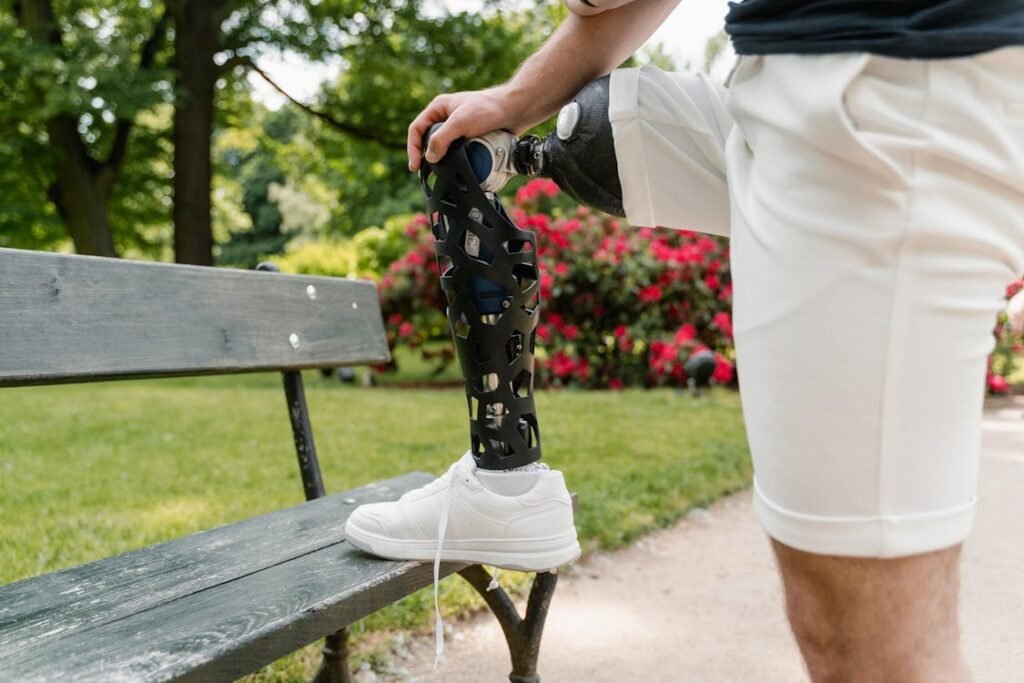
The Role of Family and Community in Gamified Recovery
Healing Isn’t Just Personal—It’s Social
In India, recovery isn’t something people go through alone. Family is usually right there—offering help, advice, and emotional support. Whether it’s a spouse reminding you to wear your prosthetic or a sibling cheering you on, those daily interactions shape how someone feels about their progress.
Gamified rehab makes space for this connection. Because it’s easy to see, share, and celebrate small wins, it naturally invites others into the journey. A son sees his father complete a new level. A mother notices her daughter’s grip strength improving through a colorful app. A friend texts, “I saw your score went up—nice work!”
These moments of shared pride turn what might feel like a private, quiet struggle into a team effort. The game becomes something everyone can be part of. And when loved ones are engaged, users are more likely to stick with the process.
That’s especially helpful in busy homes, where time and energy are always being pulled in different directions. The app acts like a gentle guide, keeping everyone focused on the same goal—growth, together.
Helping Children and Teens Stay Engaged and Uplifted
Rehabilitation can feel especially overwhelming for children and teenagers. Their world is fast, full of comparisons, and often unforgiving when it comes to differences. A child returning to school after an amputation may feel shy or even ashamed. A teen may struggle to explain what they’re going through to friends or classmates.
Gamified rehab turns these hard moments into empowering ones.
When young users play games that improve their prosthetic control, they stop seeing the prosthetic as something “extra” or “wrong.” It becomes part of how they play, how they win, how they grow. The game mechanics—points, avatars, music, movement—make rehab feel age-appropriate and emotionally safe.
They can show their progress in a way that feels cool, not clinical. They can invite friends to try the challenges. They might even become ambassadors in their schools, showing others how tech is helping them do more, not less.
At RoboBionics, we’ve seen young users transform from hesitant and withdrawn to proud and engaged—all because they had a platform that treated them like people, not patients.
And because the app is digital, their recovery doesn’t stop at the clinic. It goes with them to school, to outings, to family trips. Every place becomes a space for confidence to grow.
Reducing the Emotional Toll of Comparison
Urban life brings with it a certain pace—and a lot of comparison. Whether it’s who’s getting promoted, who’s learning fastest, or who’s “back to normal” after an accident, people often measure their progress against others. For someone recovering from limb loss, this can be a source of deep anxiety.
Gamified rehab shifts that narrative by focusing on personal bests, not public standards.
The app celebrates effort and persistence. It encourages users to beat their own scores, rather than someone else’s. This reframes what success looks like. It’s no longer about being the fastest or the strongest—it’s about showing up and getting a little better every day.
This is especially powerful in India, where societal pressure can be intense and often unspoken. Game-based apps create a space that feels kinder. There’s no one judging. No one waiting. Just the user and their path.
That emotional safety is what helps many amputees keep going, even on hard days. It removes the fear of “falling behind” and replaces it with the joy of moving forward.
Creating a New Kind of Normal in Indian Homes
When someone uses a prosthetic, daily life changes. Routines shift. Roles adjust. It takes time for both the user and their family to find a new rhythm. In many homes, this adjustment period brings quiet stress. People want to help—but they don’t always know how. Users want to regain independence—but they feel watched or pressured.
Gamified rehab brings clarity to this process.
Because progress is visible—on the screen, in the challenges, in the points—it helps everyone understand what’s happening. It removes confusion. It sets clear goals. And it makes the user feel empowered, not pitied.
Over time, homes that once felt tense or uncertain become places of pride. The app becomes a topic at the dinner table. A shared joy. A reminder that the journey is moving forward.
In Indian culture, where family is at the heart of everything, this kind of harmony is priceless.
And that’s the magic of these apps—they don’t just help users move better. They help them live better.
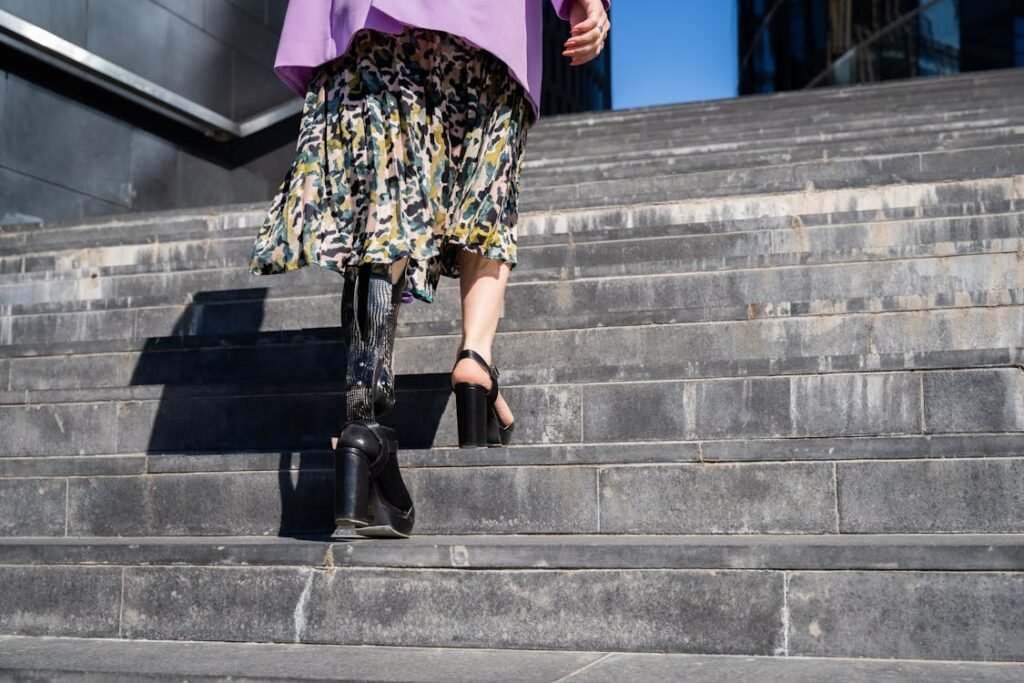
Designing for India: Making Game-Based Rehab Work in Local Contexts
Why Cultural Fit Matters in Recovery
India is not a one-size-fits-all country. From the bustling streets of Delhi to the quiet towns in Kerala, our people, languages, habits, and beliefs are incredibly diverse. What motivates someone in Bengaluru may not connect with someone in Bhopal. That’s why game-based rehab apps must do more than “work”—they must fit.
At RoboBionics, we understand that a good rehab experience is not just about how the app functions, but how it feels. That means using familiar sounds, easy language, and visual elements that reflect Indian culture. It means respecting local preferences, celebrating small wins the way people here do, and making sure instructions are clear in multiple regional languages.
This attention to cultural relevance doesn’t just improve user experience—it improves outcomes. Because when someone sees themselves in the product, they’re more likely to trust it. More likely to use it. And more likely to heal with confidence.
Whether it’s a farmer in Nashik or a teenager in Chennai, gamified recovery needs to feel personal. Familiar. Safe. And when it does, it becomes more than a game—it becomes a lifeline.
Making Digital Tools Truly Accessible
India may have one of the largest smartphone user bases in the world, but digital literacy still varies widely. Some users are tech-savvy. Others are learning how to use apps for the first time. That’s why simplicity is key.
We design our game-based rehab tools with clean layouts, guided steps, and minimal taps. The goal is to make the experience intuitive—even for someone who’s never used a gaming app before. No clutter. No confusion. Just a smooth, welcoming journey.
It also means keeping the file size low, so it doesn’t take up too much space on a basic phone. It means designing for lower bandwidth, so progress isn’t lost when the internet drops for a moment. It means building something for India, not just importing a western model and hoping it fits.
This mindset has helped us reach more users in second-tier cities, suburbs, and even remote corners of urban clusters. They don’t need to change how they live to fit the tool. The tool fits into their life.
And that’s the heart of real accessibility.
Affordability Without Compromise
One of the biggest barriers to prosthetic care in India has always been cost. Imported bionic limbs can cost over ₹10 lakh—completely out of reach for most. Even with a basic prosthetic, the ongoing expense of rehab sessions, transport, and time off work can add up quickly.
That’s why our mission at RoboBionics has always been to combine world-class technology with local affordability. Our flagship product, the Grippy™ Bionic Hand, is proudly made in India and priced between ₹2.15–3 lakh—less than one-third of what imported versions cost.
And our game-based rehab platform is included as part of that experience—not as a costly add-on.
This matters more than people realize. Because when a product feels within reach, users take ownership of it. They don’t hesitate to train daily. They don’t treat it like a loaned tool—they treat it like a part of who they are.
Game-based rehab, when paired with affordable hardware, makes full recovery possible—not just for the rich, but for the many.
Data That Drives Better Care
One quiet but powerful benefit of digital rehab is data. Every movement, every session, every skipped challenge—it all adds up to a story. A story that can be shared (with permission) with doctors, therapists, and even caregivers.
This data does more than track progress. It helps guide decisions.
Maybe a user is struggling with precision but doing well with strength. Maybe they’re practicing more at night than in the morning. Maybe their usage drops after a social event or a stressful day. This kind of insight can help tailor their care—making it more human, more helpful, more real.
It also helps us at RoboBionics improve the product. We learn what users love, what confuses them, what keeps them going. And we use that to build better tools, smarter features, and more engaging games.
India’s future in healthcare will be data-powered—and game-based rehab is already ahead of the curve.
Partnering With Clinics and Care Providers
We know that apps don’t replace human care. They support it. That’s why we work closely with prosthetic centers, physical therapists, and hospitals across India to ensure our game-based rehab tools blend into the existing care structure.
Therapists can use the app to assign specific challenges based on a patient’s needs. Clinics can reduce in-person visits without losing track of progress. Families can get involved without needing professional training.
It becomes a shared system—one that respects time, supports the user, and makes the work of healthcare professionals easier.
And in cities where rehab staff is stretched thin, this model allows more patients to get high-quality attention—without burnout.
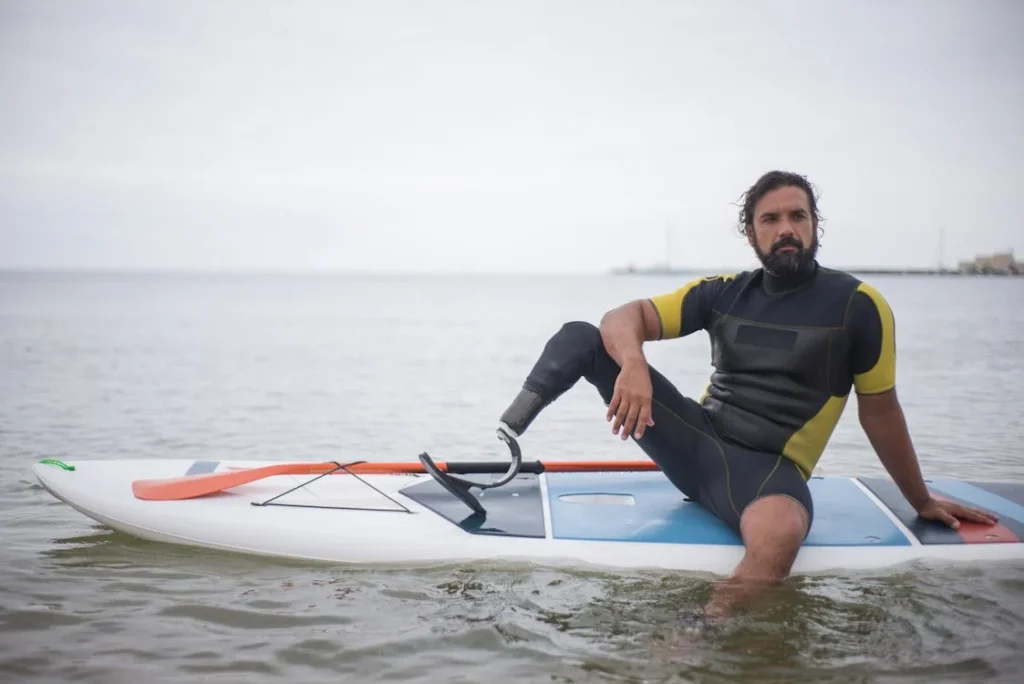
Reclaiming Identity: How Games Help Amputees Feel Like Themselves Again
Losing a Limb Is More Than Physical
When someone becomes an amputee, the impact isn’t limited to the body. There’s a deep, internal shift—one that touches identity, self-worth, and how a person sees their future. In India, where identity is often tied to roles—worker, parent, student, provider—this shift can feel disorienting. Many amputees quietly ask themselves, “Who am I now?”
They may feel disconnected from the life they had before. Some avoid mirrors. Others stop going out. Even with a new prosthetic, they can feel like they’ve lost a part of themselves that can’t be brought back.
That’s where gamified rehab does something subtle—but powerful.
It doesn’t just help people move again. It helps them feel like themselves again.
Play as a Path Back to Joy
There’s something special about play. It brings lightness, laughter, and discovery. It’s one of the first ways we build identity as children—and it doesn’t stop being important when we grow up.
Game-based rehab taps into this playful energy. It says, “Let’s not just recover—let’s explore.” Suddenly, users are not just doing exercises. They’re navigating a colorful world. Completing missions. Beating levels. Laughing at near-wins and celebrating their tiny victories.
These experiences break the heaviness of recovery. They give space for joy to return. And when people feel joy—even for a few minutes a day—it reminds them that they’re still themselves. Not defined by what they’ve lost, but shaped by how they rise.
This emotional lift doesn’t happen in therapy notes. But it’s one of the most healing parts of recovery.
From Victim to Hero: The Story Shift That Changes Everything
In traditional recovery, amputees are often treated as patients who need fixing. Well-meaning doctors and family members take over decisions. The amputee becomes passive—a recipient of care, not an active agent in their own story.
Gamified rehab flips that script.
With every challenge completed, users feel like heroes in their own journey. They’re not being told what to do—they’re choosing. Exploring. Winning. The language shifts from “I have to” to “I did it.” That shift in story—from victim to victor—is everything.
In urban India especially, where people are under constant pressure to prove themselves, this inner sense of agency is life-changing. It brings back a feeling of control. Of direction. Of being the main character again.
And when someone sees themselves as strong, they act strong. They walk taller. Speak clearer. Dream bigger.
That’s not just recovery. That’s restoration.
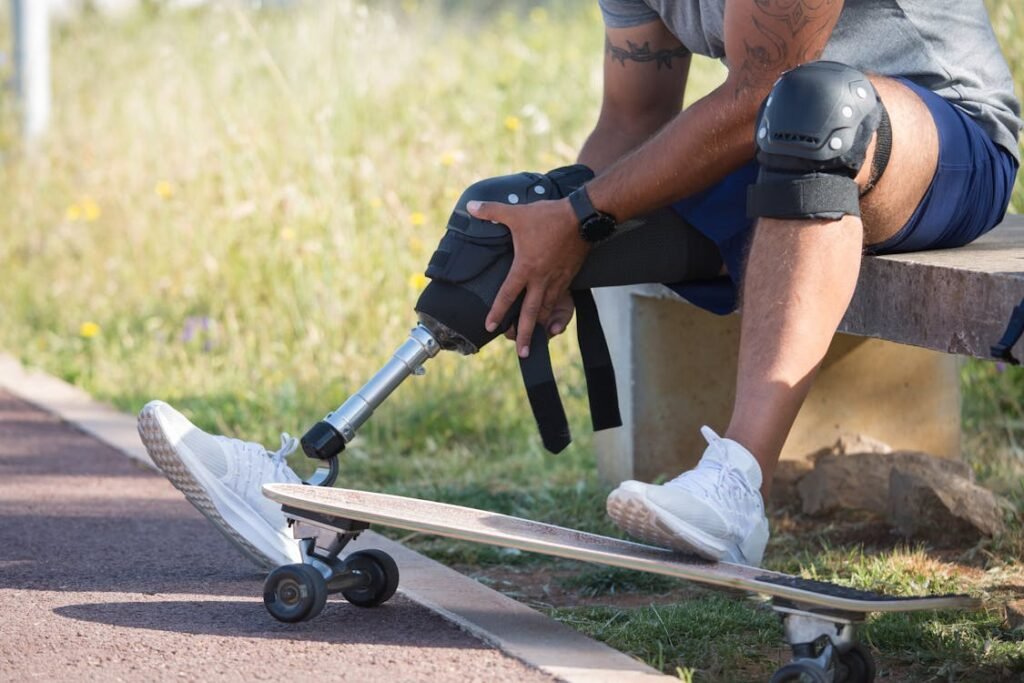
Changing the Narrative: How Gamified Rehab Is Shaping a More Inclusive India
From Curiosity to Respect in Public Spaces
In Indian cities, public spaces are vibrant but not always welcoming to people with disabilities. Amputees often face stares, unwanted questions, or assumptions that they are “less able.” This social friction can make everyday activities—like riding the metro, attending college, or going for a job interview—feel emotionally exhausting.
But something shifts when an amputee is visibly engaged in recovery, especially through gamified tools.
When someone confidently uses their Grippy™ Bionic Hand and pairs it with an app that tracks their goals and celebrates their wins, people around them begin to see something new—not a disability, but determination. Not limitation, but innovation.
The curiosity turns to admiration. The awkward silence turns into genuine interest.
Game-based rehab creates visible momentum, which helps the user feel proud—and helps the world respect the journey.
Creating Role Models and New Stories
In Indian media, the narrative around disability is slowly evolving—but it still has a long way to go. Too often, amputees are either portrayed as victims or as rare “superhumans.” The space between those extremes is left unspoken.
But gamified recovery is filling that space with real, relatable stories.
We’ve seen users in cities like Pune, Chennai, and Ahmedabad go from hesitant new users to confident role models—sharing their app scores, teaching others about their prosthetic, and even helping peers download the same rehab tools. These everyday champions are changing how disability is seen, not with big speeches, but with small, consistent action.
They’re showing their friends, neighbors, and communities what modern, dignified recovery looks like. And slowly, this is rewriting the script. From shame to strength. From hiding to leading.
Encouraging Dialogue Across Generations
In many Indian homes, older generations may struggle to understand what digital rehab is or why a prosthetic user needs to “play a game” every day. But as users share their progress through gamified apps—scores, badges, visible milestones—conversations start.
A grandfather asks, “What’s this level you finished?”
A parent says, “Show me how that challenge works.”
A sibling says, “Let’s try this together.”
These dialogues do more than explain a tool. They build bridges between generations. They help elders see how recovery is evolving—not just with medicine, but with technology and joy. And when families understand, support flows more freely.
Gamified rehab, in this way, doesn’t just help the user recover—it helps the entire household grow in awareness and empathy.
Conclusion
Recovery after limb loss used to be a quiet, lonely road. But today, across cities and towns in India, that path is being lit up by something new—games, goals, and small victories that make every step feel meaningful. Game-based rehab is more than just a modern tool. It’s a mindset. A daily reminder that healing doesn’t have to be painful or dull—it can be playful, powerful, and deeply personal.
At RoboBionics, we believe every amputee deserves not just a prosthetic, but a reason to keep growing with it. And through our gamified platforms, we’re seeing lives shift—confidence rise, smiles return, and futures open wide.
Ready to experience what modern recovery feels like?
Book a demo with RoboBionics today.
Let’s help you or your loved one rediscover what’s possible—one game, one goal, one breakthrough at a time.



